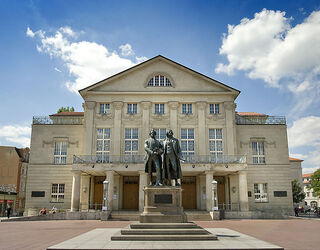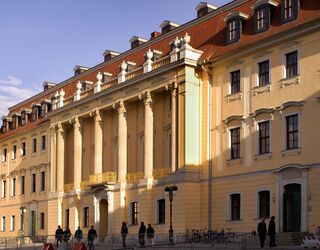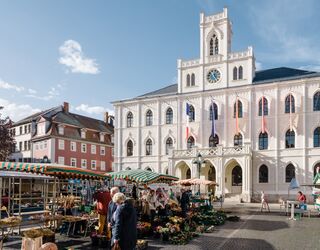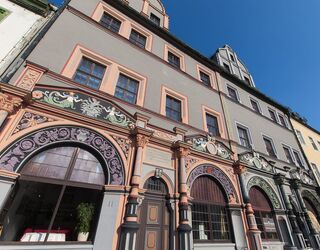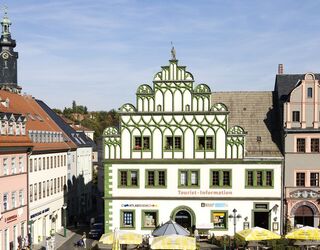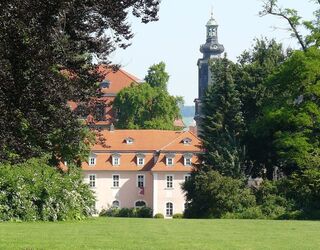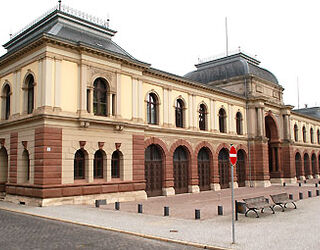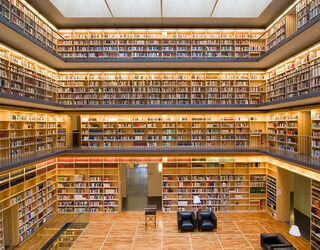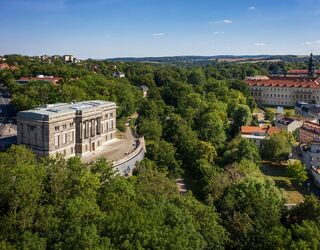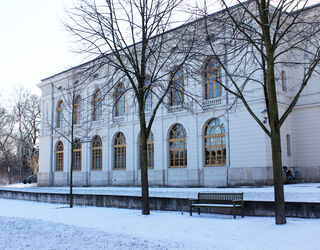Deutsches Nationaltheater Weimar
The successor of the Weimar Court Theatre, whose director was once Goethe. Over the decades, it has been rebuilt a number of times and also hosted several important political events, the best-known of which is the foundation of the Weimar Republic. Nowadays the German National Theatre is home to the…
Duke's Palace
After the City Palace was hit by fire, this impressive three-storey baroque building with a columned porch became the home of the ruler’s family, even though it had originally been designed as an administrative building. Since 1951, it has housed the School of Music "FRANZ LISZT". In front of the…
Town Hall
After its two predecessors burned down, it is the neo-Gothic version erected in 1841 modelled on Hof Town Hall that can now be admired. The Mayor of Weimar’s office is contained here, along with the marriage chamber of Weimar Registry Office. One delightful detail is the use of bells made out of…
Cranach's House
Cranach House bears witness to the early Renaissance period. Lucas Cranach the Elder had his ‘painting room’ here, where he worked on the famous three-panel altar picture for the town church. In the end, he died before it was finished, and the picture altar had to be completed by his younger…
Town House
This magnificent building in the style of the early Renaissance was destroyed in World War II. When it was rebuilt with a modern interior in 1968–71, the historical façade was nevertheless restored. Always owned by the council since 1422, the building has been put to a number of different uses over…
House of Charlotte von Stein
The friend and close confidante of Goethe, Charlotte von Stein lived here for 50 years until her death in 1827. Until 1794, the stables of the ducal hussars were located on the ground floor, but were subsequently replaced by function rooms. Nowadays the building is home to the Goethe Institute in…
Marstall
The former royal stables complex was designed by Ferdinand von Streichhan in neo-Renaissance style. The original riding hall was eventually converted into a reading room, albeit via a number of other functions first. Under the Nazis, the royal stables were used as a prison for the Gestapo between…
Study Centre of Herzogin Anna Amalia Library
The new library ‘box’ positioned inside the courtyard of the Red and Yellow Castle is the centrepiece of the new study centre. With its sharp contrast between the rough exterior made of exposed concrete and the smooth timber shell inside, not to mention its book galleries extending right the way…
Goethe and Schiller Archive
Modelled on the Petit Trianon in the Park of Versailles, Grand Duchess Sophie had the oldest literature archive in Germany built to preserve handwritten manuscripts by Goethe and Schiller. The stocks in the library are made available for research purposes – either in the original or as a copy on…
Main State Archive
It is one od the first purpose-built archive buildings in Germany, although its facade doesn't betray the builing's function. According to the Gran Duke's wish, the architecture reflects the Italian Renaissance. The interiro hsa been modified to fulfil today's requirements for a modern…
Anzeigen
